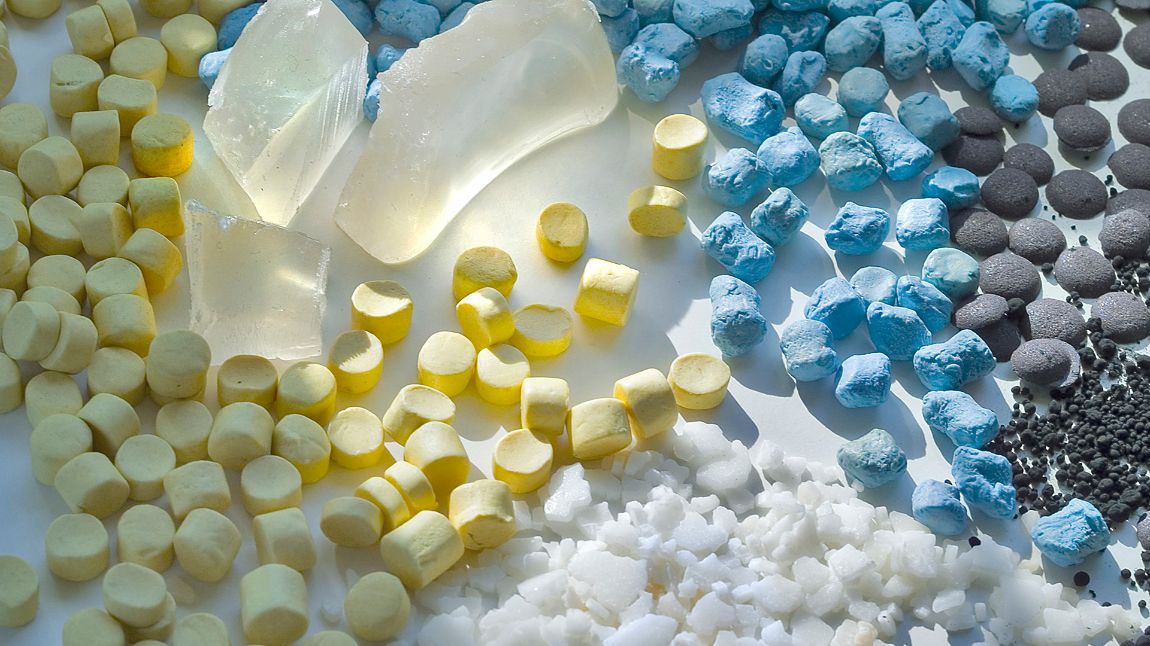Material design and compounding
Industrial applications require more and more elastomeric and non-elastomeric sealing materials that can operate in extreme conditions. Not only do they have to withstand very low or very high temperatures, are exposed to aggressive fluids or dirt and need to resist extreme physical stress, but they also need to operate safely and ensure reliable long-term operation. Furthermore, those compounds have to comply with numerous regulations.
At Angst+Pfister, we develop and manufacture high-tech compounds focusing on a wide range of specific applications for many different industries such as process, food & beverage, pharmaceutical and MedTech, oil & gas, railway, agricultural and construction machinery, and automotive.
We are there for you during the whole material design process, supporting you with our vast compounding knowledge in the following areas:
- Selection of high-grade raw elastomeric materials
- Selection of additives
- Assessment of mechanical parameters
- Mechanical tests
- Compound production
- Laboratory tests

In-house production of high-tech elastomeric compounds
PERTEC® is the newest generation of Angst+Pfister’s high tech elastomer compounds. They are high performance compounds with outstanding capabilities. Depending on the industry and application Angst+Pfister offers different PERTEC® variations to perfectly meet the according requirements.
Check out our Performance Compound Table for the Sealing Technology to find the perfect solution for you!
Selecting, assessing, testing, producing
Learn more about our specific compounding steps!
Automatic filling system
The automatic raw material filling system allows a precise, repeatable and process-secured preparation of ingredients in order to mix a finished elastomeric compound.
Rheometer test
Rheology is used to describe and to assess the flow and deformation behavior of the materials. In rubber field, a rheometer test is additionally used to describe the compounds curing behavior. At the beginning of a typical Moving Die Rheometer (MDR) test, an unvulcanized rubber sample is inserted into a pre-heated mold at a specified temperature. Once the sample is placed into the mold, the mold closes and presses the sample inside the cavity. The upper part of the mold then starts to oscillate at a specific angular amplitude and frequency, thus introducing a deformation state in the material. The resulting torque is recorded as a function of time. Since the rubber compound starts to cure, the recorded torque increases with the time up to a certain peak. The time to reach the torque peak is an indication of the required time to cure the specimen.
De Mattia fatigue test
With the De Mattia fatigue test it is possible to assess the rubber compounds fatigue resistance under repeated flexing or elongation cycles. Typical test parameters to be defined include: sample type, strain level, excitation frequency, temperature and number of cycles. Once the test reaches the defined number of cycles, each specimen is visually inspected for cracks. If no cracks are detected, the sample passes the test.
Lifetime test for final parts
Lifetime tests are required wherever a component will be a critical element in an application. In a simplified manner it can be described as an accelerated test to proof that the component will fulfill the specified lifetime requirements. Depending on the application, different loads will be applied in different directions – simultaneously if required.
Lifetime test for stroke seals
We perform a high variety of endurance tests in different frequencies and repetitions to estimate the lifetime of a final part, all while logging important information like changes in forces and temperature developments during the test cycle.
Lifetime and endurance testing of finished parts has become increasingly important in today’s market with ever higher safety standards and lifetime expectancies.
PTFE compounding
Angst+Pfister also develops and manufactures a wide range of standard PTFE and other high-performance plastic compounds in-house.
The information provided by Angst+Pfister regarding testing and engineering capabilities on our website is for general informational purposes only. All information on the site is provided in good faith, however we make no representation or warranty of any kind, express or implied, regarding the accuracy, adequacy, validity, reliability, availability or completeness of any information displayed. Your reliance on any information depicted above is solely at your own risk, and we encourage you to consult with the appropriate professional before taking any actions based on it.
